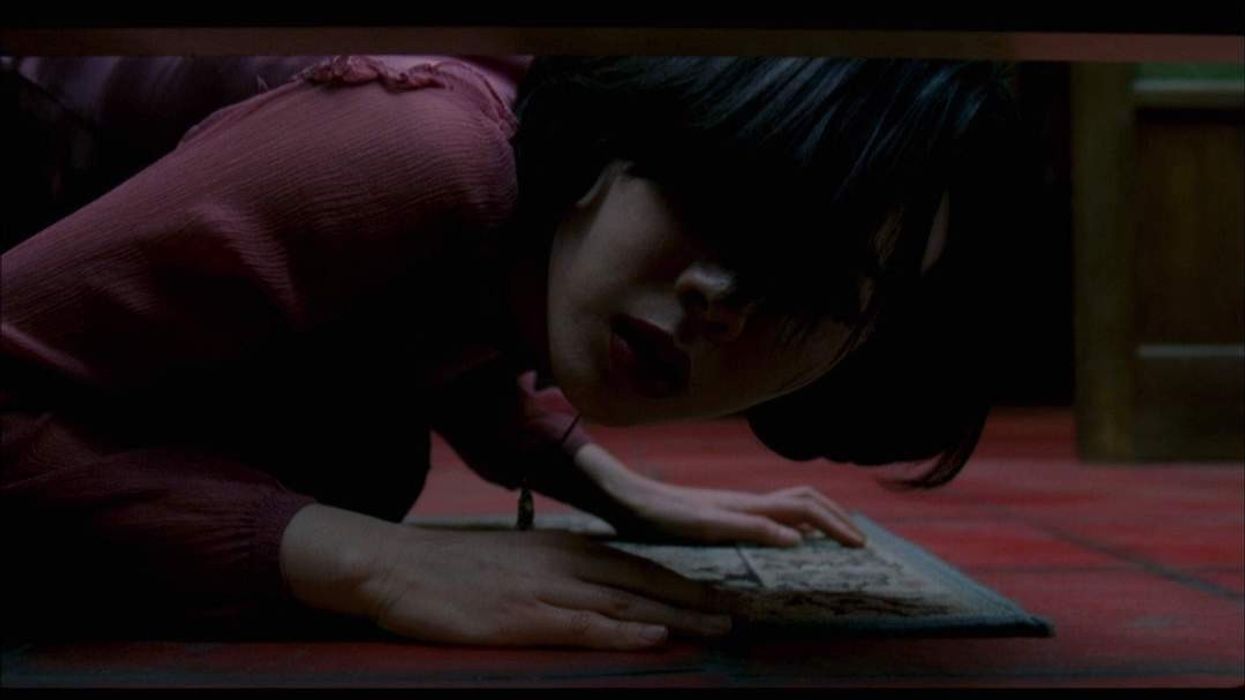The Unsettling Mise-En-Scène of 'A Tale of Two Sisters'
This simple film technique creates the neverending nightmare in this slow-burning horror.

Mise-en-scène is one of the first techniques of filmmaking that students learn about in their film studies class. It is the various elements of design that are placed before the camera to create a sense of time, space, mood, and a character’s suggested state of mind.
While many great films use mise-en-scène to its fullest potential, the horror genre seems to lack the understanding of the basic technique’s full potential. Instead of creating tension throughout the film’s run time, horror films rather scare an audience one scene at a time.
But Kim Jee-woon’s A Tale of Two Sisters stands alone, using mise-en-scène to heighten the story and the unconscious dread that lingers throughout the film. The story follows the sinister events that follow two sisters after they return home from a hospital to their father and step-mother. Besides being an excellent horror film on its own, A Tale of Two Sisters keeps an audience at the edge of their seats by creating a rational reason for the events that take place by manipulating the mise-en-scène.
Check out Spikima Movies’ full breakdown of the technique in the film below.
Colors
Two colors are present in almost every scene of the film: red and blue. Various shades of these colors are used to create visual discomfort due to their extremely complementary nature.
These colors are reflecting the frantic energy of Su-mi (Im Soo-jung) while forcing the audience to share this restlessness as well. Every shot will consist of red and blue in various shades while shades of light brown continue to neutralize certain characters and their settings. The fabricated world that Su-mi has created through her ruptured identity will always be implied through the colors she is associated with: red and blue.

The set design
As the vivid colors of the house take over and the lines, actions, and lighting communicate Su-mi’s split and broken state of mind, a new anxiety emerges from the set design to smother us with terror. Su-mi’s obsessive and compulsive nature that stems from her guilt is portrayed by the various patterns on the walls of the house.
The repeating flowers seem aggressive in their portrayal of innocence as if they are hiding a stained past. The audience can unconsciously tell there is something wrong with the house, and the setting begins to feel claustrophobic and dangerous.
The repetitive actions of the characters make the entire house feel designed, transforming the location from a home to a suffocating dollhouse, until Su-mi and the audience are confined to the room where the secret is revealed.

Costumes
The very first time we see Su-mi and Su-yeon (Moon Geun-young) together, the film deliberately highlights the color red which quickly identifies itself with Su-mi’s status as an older sister. The significance of red is further explored with its tint on Su-yeon’s skirt which is diluted by her light brown blouse. This light brown motif follows the sisters into the next scene when Eun-joo (Yum Jung-ah) is introduced wearing a light brown blouse and blue skirt.
The idea here is that both Su-yeon and Eun-joo are extensions of Su-mi’s conscience created by her condition. Her sister and stepmother wear clothing that mimics Su-yeon’s color scheme before they slowly start to fade into the color scheme of the walls in the house.
The colors have already established that the clothing worn by Sun-yeon and Eun-joo, the reds and blues, are parts of Su-mi’s fragmented reality. As the film progresses, the light browns that Su-yeon wears begin to have flowery patterns that mimic the walls. This visual trick makes the audience doubt the ability to tell the difference between the horrors of the house and the horrors that surround Su-yeon.

Composition
Throughout the film, there is a ghost that lingers in the house, but the viewer is unsure if the ghost is truly there or not. During a dinner scene, Mi-hee (Lee Seung-bi) has a violent seizure and suffocates. The scene is chaotic with screams, violent color combinations, and quick cuts to different characters, even characters who are not there. It is at this moment that the camera position changes, acting as a ghost under the kitchen sink without revealing the ghost. It is during the car ride home does Mi-hee reveals what she saw.
This composition not only creates extreme discomfort for the audience but reveals that the haunting and chaos are contained within the walls of the house.
The supernatural element of the film is vague and questionable, which makes the audience desperate for answers. The viewer becomes fearful of what lurks in the house when the horrors of what lay under the kitchen sink are just a branch of Su-mi’s broken mental state.
Characters are highlighted as strange by the hued lighting that represents the colors of Su-mi’s fabricated world, giving Su-mi and the audience a faint recognition of the truth but not of its exact location.

A Tale of Two Sisters reflects a character’s desperation and grief through a scary story. The terror of being trapped in something that is off is an experience that many audience members can’t deal with on the first watch. It is uncomfortable, claustrophobic, and unescapable.
The next time you sit down to watch A Tale of Two Sisters, focus on the mise-en-scène and how it creates tension without using music or an excessive amount of jump-scares. The true terror is in the building of tension. The horror is over the moment the tension snaps, so don’t let that build up to end until the last scene.
Let us know your thoughts on the use of mise-en-scène in A Tale of Two Sisters in the comments below!
Source: Spikima Movies











